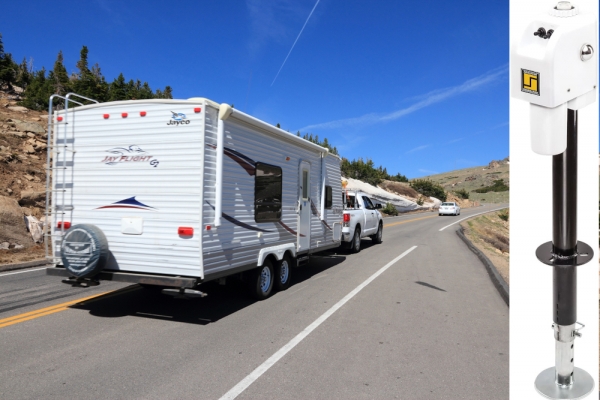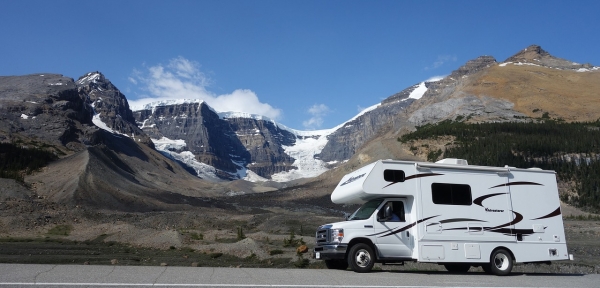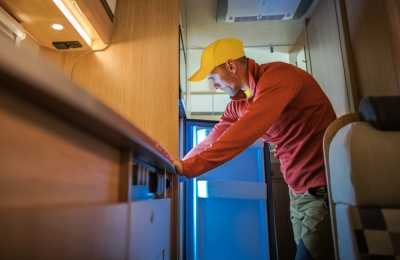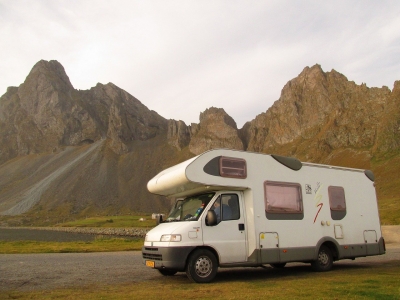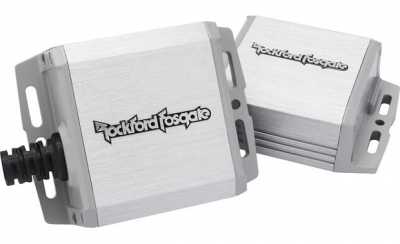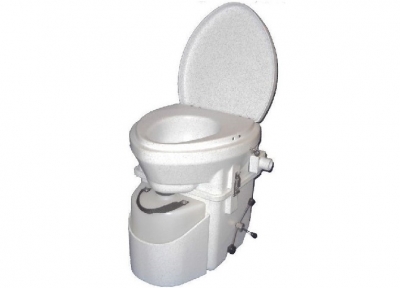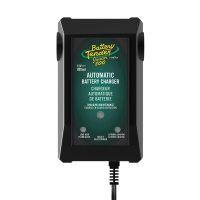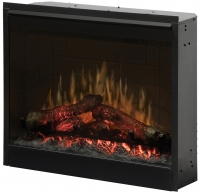Welcome to Crossing Creeks RV Resort & Spa in the heart of iconic Blairsville

RV Tech (35)
If you bought a bare-bones travel trailer and plan to make improvements over time, here’s one of the first things you should consider adding: an electric tongue jack.
The fresh water system in an RV needs routine maintenance to stay healthy. It’s tempting to think, “Well, I’m only putting clean water in there, so it will be fine.” It actually takes more than that, and some things you might not have thought of will help if added to the system.
Sometimes you can’t get around the need for a bigger refrigerator in your motorhome or towable. The permanent fix is upgrading to a bigger built-in fridge, but that’s also the most expensive solution.
Your tow vehicle and motorhome have a mechanical maintenance list aside from the items to make sure your camping needs are met.
Even if your RV is relatively high end, chances are that the speakers in its standard sound system leave something to be desired.
There are hundreds of options out there for improving sound inside or outside your rig. If you’re not as enthusiastic for big wiring jobs as you are for big sound, plenty of aftermarket speakers are wireless, connecting to your sound source by Bluetooth signal instead of cables. Some have built-in microphones so you can wirelessly use your phone to make and receive calls.
Not all radios or music players have Bluetooth, but your smartphone, tablet or laptop should. If your RV’s built-in radio/music player lacks Bluetooth, it’s easy to upgrade the radio—easier than wiring in multiple speakers—since most RV sound systems are really just car radios.
What You Need
You will need a 110-volt line or USB outlet to power the speakers and to recharge a speaker’s internal battery. You could also recharge most from a battery bank with a USB port. With the right speaker choice, you can take your wireless speakers outside.
Most of these compact speakers won’t move enough air to be heard over a great distance, but they’ll fill the inside of your RV with quality sound and satisfy a typical outdoor gathering.
Portable Wireless Indoor Speakers
Bose Soundlink Color II
Features: Bluetooth connectivity; 110v/USB rechargeable; pairable for stereo; built-in microphone; water resistant.
Size: 5.6 x 5 x 2.2 in.
Weight: 1.2 lb.
Price: About $130.
The rechargeable Bose Soundlink Color II has good mid- and high range-sound according to reviews. It connects wirelessly by Bluetooth, or by 3.5mm cable. Its built-in microphone allows it to be used as a speakerphone with a smartphone. Soundlink Color II can be paired for true stereo sound. It’s available in black, white, blue, red or yellow. Not all sellers have all colors.
The Bluetooth range is 30 feet, so you should be able to take it outside. The speaker is padded for some shock resistance, and with its iPX7-rated water resistance, it can resist splashes, mist or even accidental immersion in up to 30 inches of water. The “X” in the rating means it is not tested for dust resistance.
Its biggest drawback: Soundlink Color II has weak bass compared to some rivals. If you don’t like being overwhelmed with bass, however, that may be a plus.
Klipsch Groove
Features: Bluetooth connectivity; 110v/USB rechargeable; top-mounted controls or wireless control through connected device; splashproof.
Size: 4.56 x 5.51 x 2.65 in.
Weight: 1.7 lb.
Price: $99
The compact Klipsch Groove produces excellent sound for its size. This black speaker has a 3-inch driver for clear music in all ranges, although some reviews say it distorts a bit on the high end at full volume. Bass is better than from many of its competitors, thanks to twin passive bass radiators.
The range of the Groove’s Bluetooth wireless connection is 33 feet, so it’s easy to carry it outside. It’s splashproof but not immersible, with a rating if iPX4. The Groove recharges via a USB port or with the included 110-volt power brick.
The main negatives: It cannot be paired with a like speaker for true stereo, and it lacks a microphone, so it cannot be used as a speakerphone.
Ultimate Ears Hyperboom
Features: Bluetooth connectivity to two devices at once, or connect by 3.5mm cable; memory for 8 devices; big sound in all ranges from twin tweeters, twin woofers and twin bass radiators; adaptive EQ; fine tuning from app or speaker-top buttons; splashproof; recharges by 110v power brick; superior 24-hour battery life.
Size: 14.3 x 7.5 x 7.5 in.
Weight: 13 lb.
Price: $399
If your fifth wheel, travel trailer or motor home is big, so is the sound from the Ultimate Ears Hyperboom: It encases two 1-inch tweeters, two 4.5-inch woofers and two 3.5- x 7.5-inch passive bass radiators. The music quality is stellar. At about $400, so is the price.
The Hyperboom easily fills an RV’s main living area, regardless of size, with quality sound. It has an automatic EQ feature, so no matter where it’s used, the sound adjusts to the surroundings.
Move the party outside, because this might be the ultimate portable Bluetooth party speaker. The Hyperboom is rated iPX4, so it’s splashproof. The battery can last all day and all night—literally. This speaker will give you more sound than you need for an outdoor gathering, even over chatter, laughter and the crackle of the fire pit. Fortunately, you can control the volume as well as the level of bass and treble, so even when the Hyperboom is whispering, clarity is first rate.
The biggest negatives: Big is the operative word here. With its size and all those speakers, the Hyperboom weighs 13 pounds—not everybody’s idea of portable. You must supply the 3.5mm cable if you choose to use one. It doesn’t function as a speakerphone. And although you can fast-forward through tracks, you can’t backtrack.
Outdoor Speakers
If your rig has outdoor speakers that fail to meet party standards, audio dealer Crutchfield recommends adding amplifiers. The amps are wired in before the speakers on existing circuits. You can add improved outdoor speakers, too. Make sure all are marine- or RV exterior-rated. Amps run about $150-250 per channel. Each flush-mount round outdoor speaker generally costs $30-$50.
If your tiny trailer lacks outdoor speakers and you want to add them easily, the King RVM1000 houses two speakers and a light for abut $50. The twist is that although it’s wired for power off an existing light circuit, the RVM1000 connects to your sound system by Bluetooth. There’s no need to run speaker wire.
Remove the standard light and connect the RVM1000 in its place. You’ll have LED exterior lighting but also have sound from a Bluetooth-connected computer, tablet or smartphone.
Image Credits: crutchfield.com
If you really hate emptying the black tank on your RV, consider switching to a composting toilet. Yes, you have to empty it, too, but it’s not as messy or as smelly.
The big difference between the composting toilet and a system that uses water is that urine and solid waste are collected separately in the composting toilet. That means the results are not as offensive.
You won’t have to use your black tank at all.
Composting toilets are safe—so safe that they are installed in many national parks. Solid waste in small quantities is treated much the same as disposable diapers, and urine, if disposed of properly, is not considered hazardous.
A good composting toilet costs about $950 and up.
Installing a Composting Toilet
No water hookup is needed for the toilet itself because it doesn’t use water. A composting toiler just sits on the floor, without the need to connect to water, waste outlets or even the floor. You will need an electrical outlet to run the toilet’s small fan, and you will need to drill through a surface of your camper for a small ventilation line.
The biggest question may be what to do with your old water-operated toilet. You can just leave it in place, but that may limit the space for the composting toilet. If you remove the old water-operated toilet, you’ll have to disconnect and properly seal off the plumbing—one line only, since a toilet uses only cold water—and you’ll have to cover and seal the opening to the black tank.
An RV center can supply the parts you’d need, or it can do the whole job for you. Store your water-operated toilet so you can reinstall it if you ever sell your RV.
The composting typically requires partial assembly—unwrapping it from packing material, putting the tanks in place and possibly attaching a handle for the composting bin.
Using a Composting Toilet
You must set up the toilet for use by adding coconut fiber (sometimes called coco coir) or peat moss in the solid waste bin, hydrating the material before spreading it out at the bottom of the bin. This must be repeated after each dumping.
Using a composting toilet requires sitting. Men and boys will not be able to stand and urinate because doing so would mix liquid and solid waste, which would affect the neatness and purpose of composting. Mixing would create a stench, so children must be trained to use the composter properly.
A plastic bottle collects urine at the front of the toilet.
A larger composting bin collects solid waste beneath the bowl. Organic material, such as coconut fiber or peat moss, is placed in the composting bin to collect an mix with solid waste. For two people, a block of peat moss will probably last a year, or close to it.
Each time solid waste is put into the bin, you must turn the handle to mix it with the organic matter. That’s how odors remain in check.
Advantages/Disadvantages
Advantages
- You will eliminate black tank odors, since you won’t be using the tank.
- You’ll have no need to empty a black tank—ever.
- You are likely to need to dump solid waste less often—perhaps every 3-5 weeks—than you would a black tank.
- You’ll use less water without a water-operated toilet, so your fresh-water supply will last longer.
- Emptying both the urine bottle and composting bin are relatively easy.
- Composting toilets are portable, so you can use place one outside—say, inside a small tent.
Disadvantages
- There’s that sitting regimen, which some men may not like. If you have bad knees, you may want to securely install a grab bar near the toilet.
- You’ll have to empty the urine bottle more often than a black tank. Having extra urine bottles is advisable. They have screw-on tops, so they don’t leak. Solid waste and the composting material get dumped into a 13-gallon plastic trash bag, or better, a compostable trash bag, so you’ll need to keep plenty of the right size.
- You’ll have to find places to properly dispose of the waste—not as difficult as it sounds, but still a requirement.
Where To Dispose of Waste
To be absolutely safe, you may want to contact the environmental agency in any state where you think you may have to dispose of waste. The federal EPA lists state agencies online. Regulations also may vary by park, and by municipality, so check with them.
Dumping Urine:
Here are some places you should be able to empty the urine bottle from your composting toilet:
- At a dumping station. This is a sure place for safe disposal.
- Anyplace you can urinate. So, a public toilet, such as those in a national park, or a toilet in a fast food or big box store, could take urine from a bottle. Carry your bottle in a backpack or tote so it’s not noticeable. Men, use a stall.
- On the ground. Not just anywhere is acceptable, but many places are. Dirt roads in remote spots are good. Avoid paved surfaces, areas near other campers and ornamental vegetation. Think about where you’d urinate in the wilderness and use such an area for dumping urine. Pour over a wide area.
- Away from waterways. Urine should be dumped at least 200 feet from waterways. One bottle may not hurt, but repeated dumping by many campers would. Just don’t do it.
- Away from storm sewers. The pipes in storm sewers dump into rivers or lakes without treatment. Storm sewers should never be receptacles for urine or other human waste. Again, one bottle may not be harmful, but if everyone dumped this way, it would be.
- Never on private property without permission.
Dumping Solid Waste:
Solid waste as it comes from a composting toilet is not yet truly compost. That takes time. But it is not considered hazardous by the EPA. Your bag of waste and fiber is the same classification as solid waste or municipal waste. It’s actually not as bad as a disposable diaper, which mixes solid waste with urine and contains more non-biodegradable plastic.
If you buy a vented, extra base (about $300), you can set it aside an allow it to completely compost before dumping. That’s the ideal method.
Here are places for dumping solid waste:
- In the compost pile at a park or campground. One is typically available.
- In a trash receptacle. Place the waste inside a plastic or compostable bag before placing in a trashcan or dumpster. Landfills accept this as a type of municipal waste. It is not against the law, or else millions of moms and dads would be picked up for using disposable diapers.
- Burying. Some parks may bar this, but generally speaking if you’re in a wilderness area, you may dig a cat hole a least 8 inches deep and bury solid human waste, the same as you would if defecating outdoors while camping. The smaller the amount, the better. The bigger the amount, the deeper the hole should be. For multiple burials, use different spots.
Always read the instructions that come with your toilet. Not all models are the same. And check with EPA regulations before you dispose of waste.
Photo Credits: natureshead.net
If you’re putting your RV away for the winter—or already have—make sure your house batteries are stored properly.
Proper storage ensures that batteries won’t freeze and that they’ll be ready to take a full charge come spring to serve you for another camping season. With lead acid and AGM batteries, you don’t want freezing to occur because battery cases can expand and crack if frozen, ruining the battery. Leaking battery acid can damage concrete underneath and other materials nearby.
Don’t leave your house batteries in place, exposed to freezing temperatures and unattended all winter. That’s a sure recipe for battery failure.
Store batteries in a cool, dry place—in freezing climes, a basement is great. With acid-containing batteries, your storage spot should have an available electrical outlet for a charger.
Traditional Lead Acid Batteries
Befitting batteries with the oldest technology, lead acid batteries also require the most work for safe storage. But, hey, they’re cheap and if well maintained, reliable.
First, clean dirt and buildup from the terminals and battery casing. The buildup is highly corrosive, so wear gloves and eye protection. Ignoring the buildup can accelerate discharge.
Pull off each cap and check the water level. If tops of the metal plates are exposed, fill the battery with distilled water until the metal is submerged. (This is why they are sometimes called “wet batteries.”) Distilled water prevents mineral buildup.
Use a multimeter to check the charge level. It should be close to 100 percent before storage. If it’s low, apply a charge until the battery comes up to 90 percent. This may take eight or more hours. Then apply a 2 amp charge to top it off.
Place the battery on cardboard or wood. Concrete won’t drain modern batteries, but it is cold, and cold is a lead acid battery’s enemy during storage.
Here’s where the high-maintenance part comes in: A lead acid battery loses 5 percent or more of its power per week, so check your battery every month. It should not fall below 50 percent. Allowing the charge to fall below 50 percent can lead to sulfate buildup inside the case, and to freezing and cracking. If that happens, you’ll need to buy a replacement.
One way to slow power dissipation is by attaching a battery minder, also called a battery tender or maintenance charger. It’s a small charger—or an adjustable charger—that delivers a 2 amp charge. A battery that’s close to 50 percent discharged can be hooked to a higher-amp charger—say, 10 amps—for a few hours to restore full charge. A battery maintenance charge can then be applied. Some chargers will switch automatically from full charge to a maintenance charge.
AGM Batteries
An Absorbent Glass Mat battery is a more advanced lead acid battery, so preparation for storage is similar—but simpler. Clean off residue and mineral buildup as you would on a traditional lead acid battery.
AGM batteries are sealed, so there’s no need to check the water level. They can be mounted or stored in any position.
Use a multimeter to determine the charge level. Bring it up to full charge before storing. Power loss on an AGM battery is slower than with a wet battery, but so is recharging. AGM batteries sometimes can take more than a day to recharge. Read the manual for your battery.
Check every four or six weeks to see that the power level has not fallen below 50 percent. Apply a 2-amp battery maintenance charge to keep the power reserve from falling below 50 percent.
Lithium
Since a Lithium Iron Phosphate deep-cycle battery costs more than double what an AGM battery does, you don’t want to store one incorrectly. Storage is the easiest of all RV battery types.
Lithium batteries don’t require maintenance—they’re sealed. There’s no checking fluid level. You don’t have to worry about sulfation inside these premium batteries. And you can store them in any position.
A proper charge level for a lithium battery before storage is 40 percent—much lower than for a lead acid battery. A higher charge could result in damage to the lithium during storage. If it’s too high, disconnect the battery from charging equipment, then attach a light or two to bring the charge down.
Like other batteries, they can be kept in a cool, dry place. Unlike the others, they can remain in your RV and won’t freeze. They do not require monitoring or a maintenance charge. Return them to your RV after storage and recharge them then, or recharge them in the spring when temperatures rise and remain above freezing.
Lithium batteries can be discharged at temperatures as low as 4 degrees below zero, but never recharge lithium batteries during freezing temperatures. Lithium Iron Phosphate batteries lose a much smaller amount of stored energy than lead acid batteries do, so storing one at 40 percent should keep it safe all winter without a maintenance charge.
If You Did It Wrong
If you stored your batteries improperly or, worse, left acid batteries unattended in or outside your RV, go back and do it the safe way. If not, you’ll have to apply a recharge intermittently to prevent freezing and self-destruction. It’s much easier to remove house batteries and store them properly, intermittently monitoring their power level.
Furnaces keep you warm inside your RV on cool nights—and cold ones—but they’re not much to look at. Don’t hold your breath waiting for a fellow RVer to say, “Hey, you really need to see our heat vents. They’re just beautiful.”
Not gonna happen. Now, a fireplace—that’s a different story. A fireplace can be attractive on its own, offer a lovely view of flames, and throw a lot of heat.
A heat source that’s nice to look at is always welcome, and that’s what an electric or propane fireplace is. (If you want a rundown on woodstoves, see our earlier blog.)
Safety
When done right, a retrofitted RV propane or electric fireplace installation is just as safe as an original equipment, built-in fireplace. It may be safer than a freestanding propane space heater because it won’t accidentally tip over.
It’s imperative that the installation follows manufacturer’s specifications for clearance and ventilation. Recommended gaps between the fireplace and surfaces must be maintained, and in the case of a propane fireplace, a nonflammable wall barrier may have to be installed.
On electric fireplaces, look for a proximity detector. If it senses an object too close, it shuts down the fireplace to prevent fire.
With a propane fireplace, make sure you have a carbon monoxide detector and alarm low on a wall, plus a propane leak detector. Mount a smoke detector high on a wall or on the ceiling for either type of fireplace.
When looking for a space for an electric fireplace, try to find out from the RV manufacturer where the optional fireplace would have been installed had it been ordered with the RV. Usually the space is covered by a shallow cabinet. Remove the doors and maybe some material at the back of the cabinet and there’s probably a space for an electric fireplace. There also may be an electrical outlet already installed where the fireplace can be plugged in.
Choosing a Fuel
Fuel choice is largely personal, but it may be influenced by your RV lifestyle and whether you boondock often. It also can be influenced by the location you have for a fireplace, clearance around that space, and the size of your RV.
Electric and propane can be used under different circumstances (see below). The real flames that come with a propane unit may be enticing, or they may scare you. The simulated flames of an electric fireplace may satisfy your aesthetic sense or turn you off.
Both fuels are clean, but health issues are associated with unvented propane fireplaces. A vented fireplace, which burns outside air and exhausts gases through a vent or chimney, leaves indoor air healthier.
Propane
Pros:
- Clean operation.
- Can be used while boondocking.
- BTU rating often higher than on electric fireplace, heating bigger RVs.
- Real flames to view.
Cons:
- Can leave you without heat if you’re out of propane and have no electrical heater at campsite.
- Higher BTU output too much for some small RVs.
- More expensive to buy, install than electric.
- Can get hot in small spaces.
- Can use more propane than other appliances combined.
- May need more propane tanks to ensure adequate fuel supply.
- High humidity, resulting in mold, possible in unvented installations.
- Unhealthful air buildup in unvented installations.
- Cutting through RV exterior required for healthier vented installations.
Electric Fireplaces
Pros:
- Clean operation
- Cheaper to buy, install than propane fireplace.
- Cheaper to operate than propane unit.
- Arguably safer than propane because no flame or lethal gas; proximity sensor (if so equipped) shuts fireplace off if it detects objects too close.
- No need to cut through roof or wall because no chimney or fresh-air vent needed.
- No degradation of interior air.
- Can be used at campsite with hookup even if you’re out of propane.
- Easier DIY installation.
- Not too hot for smaller RVs.
- Color change of simulated flames on LED models.
Cons:
- Cannot be used while boondocking unless generator running.
- Produces fewer BTUs than bigger propane fireplaces, so may not heat bigger RV.
- No real flames; simulated flames produced by lights.
- Some flame simulations look cheesy.
- Some fans noisy.
- Artificial fire pops sound fake on some models.
Built-In or Surface Mount
Both gas fireplaces and electric models come in wall-mount or recessed styles. What you buy may depend on the space you have, clearance, and venting requirements, but as long as you follow the fireplace manufacturer’s recommendations, your choice should be a matter of preference.
Clearance requirements differ by manufacturer, model, BTU rating and fuel choice. In general terms, electric fireplaces need a half-inch to one inch clearance from combustible surfaces, but don’t assume: Follow the specs. Propane fireplaces are likely to need more clearance and a noncombustible lining between the fireplace and wall surfaces, and the flue pipe and surfaces.
A propane fireplace, even with wall liners, can look attractive. A good example is the 22-pound Dickinson Marine P9000. This 8.5x14x5.5-inch vented unit, designed for boats, is used frequently in RVs. It requires a stainless chimney, but the fireplace can be mounted at floor level if needed for proper draw. It also needs metal shielding on the wall adjacent to the firebox and flue pipe. The P9000 is stainless steel for a brighter look. Make sure you get the propane version, not the wood-burning solid fuel model. It’s rated up to 4,500 BTUs and can burn up to seven hours on a pound of propane. With liners and chimney, the whole setup probably costs $1,200 or less.
Electric fireplaces abound for RVs. Electric is what most RV manufacturers install. With no chimney or wall liner needed, you’re looking at $250-$500 in most cases. Figure on another $100 or so if you’re framing around it and trimming the enclosure out. You also may have electrical costs for wiring in and outlet. Still, it’s cheaper than a propane installation.
Photo Credits: rvupgradestore.com
New things come along all the time aimed at the RV market. Some are worthless, some are obviously a great idea, and some prove themselves over time.
Let’s dwell on things that actually make sense. Some make work easier. Others make good times more fun. All are worth considering and can help you check off names on your holiday gift list.
Rapid Jack
A curved wedge made from recycled plastic, Rapid Jack from Andersen Hitches solves many a problem with having to install tire chains or change a trailer tire. It works with dualies and with twin-axle trailers. Rapid Jack is has a weight capacity of 20,000 pounds, despite weighing just 6 pounds itself.
Insert Rapid Jack under an inflated tire on one of two axles or a tire on a dually axle, then drive forward or back until you feel the vehicle lift. That gets the tire that’s flat or to receive chains off the ground. It’s easier than setting up a traditional jack and cranking it or pumping a lever. Laid on its side, it also can be used as a base for a hitch jack. Price: About $50.
Battery-Powered Impact Wrench
If you hand-crank four scissor jacks to stabilize you RV once you level it, you’ll save time and effort with a battery-powered impact wrench. It also saves wear on your back, hands and arms when changing a tire.
Only a few years ago, you needed compressed air to have a powerful impact wrench. Not today. Stronger batteries and powerful magnets make modern impact wrenches quite good. With the appearance of a squat drill-driver, an impact wrench has more power and more torque, and a collet, rather than a chuck, for holding bits and tools. Look for a wrench rated for at least 300 lb/ft of torque with an 18-20v battery. Make sure you’re getting the tool, battery and charger. Many recharge in less than an hour. The DeWalt Max XR throws in a bag—perfect for RV storage. You’ll have to pick up attachments that fit your jacks and wheel lugs. Price: $150-$350.
DJI Mavic Mini Drone
If you’ve thought about adding a drone to your RV toy box but shied away from $1,000—or higher—price tags, consider the DJI Mavic Mini quadcopter. It’s so lightweight that the FAA doesn’t even require you to register it. Its four fold-away motors and rotors propel it to speeds up to 25 mph. The built-in camera is mechanically stabilized on a 3-axis gimbal, the best way to ensure that video is shake-free. It’s capable of recording video in 2.7K high-definition—not the highest out there, but very good. Detailed stills are 12MP.
Mavic Mini can fly 2.5 miles away and stay aloft nearly half an hour. That’s stellar in a small, foldable drone. The included controller links to your smartphone so you can see what the drone does. Store and edit video and stills on your phone. Mavic Mini takes off and lands easily, and there are flight tutorials. Use Mavic Mini to scout ahead when you’re exploring, to preserve your activities, or to shoot creative selfies with the help of preprogrammed flight modes. DJI drones are known for dependability. Price: $399.
Walmart Atlas
A paper Atlas in 2020? Really? You bet.
You may scoff at a paper Atlas in the age of GPS, but it provides things at a glance that your GPS or cell phone just doesn’t. Maybe the most important thing is that an old-fashioned atlas works without power, so if you’re on the road, don’t know the area, and there’s no cell signal because a tower or power is absent, a paper Atlas is a valued companion.
A paper atlas also can give a bigger view than a tiny monitor or smartphone screen. That helps if a family is gathered at lunch or breakfast trying to figure the next leg or two of their journey. They’re likely to see more features than on a GPS map. The wider view also helps put things into perspective. The Walmart version shows the location of the chain’s stores and denotes where gasoline and/or diesel fuel is available. The stores also are probably sources of other necessities, including prescriptions, propane and firewood. And the paperback will store easily. So there! Stop sniggering. Price: $11-20.
Image Credits: Dronenerds.com
Portable lights are invaluable to RVers when hitting the trail, relaxing outside the RV, responding to emergencies and performing maintenance tasks.
Flashlights can do more than just light the way. Thy can also signal an emergency. And if they’re the right strength, shape, size and weight, they also can help with self-defense.
LED Bulbs
Today’s best flashlights have LED bulbs. LEDs are brighter and whiter than older halogen bulbs and far brighter than even older incandescents. They also are more shock resistant, so dropping one on the trail or while walking to camp facilities at night won’t kill your light.
Many LED flashlights have adjustable light settings. Batteries can last for weeks on a low setting and surprisingly long even on high beam. The bottom line: LEDs emit more light, particularly in groups of three, five or more, but use less energy than a single older bulb.
Battery Choices
Influencing your battery choice are your needs, budget and tolerance for the inconvenience of recharging or swapping out single-use batteries.
Most rechargeable flashlights with integrated batteries have lithium-ion units that charge in two to 10 hours. All other factors being equal, the higher the battery’s mAh rating (milliamp hours), the longer it will deliver power before needing to be recharged, and the more draw it can handle. Adding convenience is USB-cord recharging, allowing recharging from other devices, battery packs or vehicle ports.
You can still get flashlights that work on traditional disposable alkaline D cells (the big cylindrical batteries) and AA and AAA cells (smaller cylindrical batteries), or CR123A batteries. Those sizes also are available as rechargeable batteries, usually in nickel metal hydride, or NiMH, so you can buy a charger and recharge reusable batteries hundreds of times. Shop carefully for chargers. Some chargers will replenish four batteries in about an hour or less; others can take four hours or even longer. The Energizer 1-hour charger with 4 NiMH batteries is about $35.
Newer 18650 batteries also are rechargeable, often with 1,800 to 3,000 mAh ratings or higher to power a flashlight longer, and 3.7 volts of power. They power laptops, other electronics and even the Tesla rechargeable car—although a Tesla requires more than 7,000 of them. Seriously! Similar but smaller than the 18650 are 16340 batteries. $10-$25, depending on brand and capacity.
Both sizes can be purchased for a little extra money with built-in protection against overcharging and overheating. You can also buy an overcharge-protected charger. The Dottman Smart Universal Battery Charger can charge AA, AAA, 18650, 16340, CR123 and more sizes and guard against overcharging. About $35.
Let’s look at a few flashlights, and where and when they come in handy.
Tactical Flashlight
A tactical flashlight is tough and can take a pounding—or deliver one in self-defense. The Streamlite Stinger slips into a back pocket because it’s thin. Rubber over an aluminum body provides good grip and the polycarbonate lens is unbreakable. It has an adjustable beam and a 50,000-hour LED. It can shine up to 6¾ hours on low, 3½ on medium and 1¾ on high. The strobe can be used to disorient an assailant, or it can signal distress for 5½ hours. It’s water resistant and includes a charger. $100-$125.
Rechargeable Flashlight
The Goodsmann Submersible LED Spotlight Model 9924-H101-01 is versatile and powerful, with an astonishing 1,100-foot beam—more than a third of a football field. Its Cree LED lamp produces a blinding 3,000 lumens. The built-in battery is rated at up to 2,000 mAh, powering it up to 8.5 hours on low and up to 3 hours on high. A flashing emergency beacon has a runtime of up to 7.5 hours. A pistol-style handle makes it easy to hold, and a fold-down stand makes it a work light. It also floats. About $150.
Headlamp
Convenient for hiking, breaking down camp before daybreak or performing maintenance, a headlamp leaves your hands free. The rechargeable Black Diamond series can emit a beam rated at up to 300 lumens, with a low setting available. Runtime on high is up to 30 hours. It’s water resistant, so changing a tire or walking your dog in the rain won’t damage the lamp. $15 and up.
Traditional Flashlight
Flashlights with D, AA or AAA cells have been around for decades for one simple reason: They work. They have gone through many iterations. Most significant are the change in lamps from incandescent bubs to halogen and finally LEDs, and tougher cases. With the availability of rechargeable, removable batteries, they’re cheaper to operate. You can’t do much better than a Maglite ML300. It produces 1,000 lumens of light on 4 alkaline D-cell batteries and can run for 97 hours on low or 5¾ on high. Smaller Maglites also are available. $90-100.
Lantern
Two-hundred hours of use from one charge on a lantern is nothing to blink at, and that’s what the Tough Light Rechargeable Lantern delivers. Lanterns are great for campsites and completing work in dark corners of your RV or at night. Tough Light produces 400 lumens, adjustable to 200 lumens for the longer runtime. A white beacon shines for 265 hours, and a red hazard light for 526. The lantern is water resistant to 5 feet. About $65.
More...
If you miss curling up by the fire on a cold fall or winter’s evening because you’re on the road in your RV, you may want to look into real wood-burning stoves for RVs.
These compact units, in addition to lending a rustic appeal, supply all the heat most RVs would need on cold nights—or days.
Having a wood-burning stove in a RV requires certain things:
- Enough space
- Proper insulation against intense heat on the nearby walls, floors and ceilings
- Proper exhaust to prevent carbon dioxide from building up inside the RV
- Usually a separate pipe for air intake
Wood Heat Pros/Cons
Wood heat has its advantages:
- BTU output is high.
- Wood heat smells great—especially with one cherry log on the fire.
- Firewood is cheap—particularly if you have access to a wooded lot of your own or a friend’s.
- A stove with a big enough top surface can be used for cooking.
- Wood heat tends to be dry, reducing condensation on interior surfaces.
Wood heat also has disadvantages:
- You’ll need to cut wood into pieces that fit, no more than 6 or 8 inches on some small units.
- Fires may not burn through the night, so you may have to wake up to add fuel.
- There’s ash to clean out and dispose of.
- Flue pipes and the stove must be cleaned periodically.
- If you have a stealth van or converted truck camper, the flue pipe will give away your vehicle’s true identity.
- You will have to cut a hole in the roof of your RV for the flue pipe, and fit a kit that lets you remove the tall pipe and seal the opening when on the road.
- Back to that dry air. You may want to humidify a bit with a pan or kettle of water on the stove.
Wood Heat Works
Among people who convert other vehicles into RVs—school buses and cargo trailers, for example—wood heat has proven to be viable, effective and safe. It works in a commercially made RV as well if you have the space.
All wood stoves must have a clearance area for walls, ceilings, floors and furniture. Propane heaters have clearance requirements, too, but those for wood stoves typically are larger.
You’ll need to buy and install a surface-protection kit that has fire-resistant surfaces and insulation to prevent the intense heat of the wood stove from migrating to wall surfaces, ceilings and floors. Alternatively you can make barriers out of non-flammable materials.
If your stove is mounted off the floor, you may have storage space underneath. High mounting also eases loading and cleaning.
Appearance
RV woodstoves typically are painted with black heat-resistant enamels. Some offer bright metal trim, such as on the window surround on the door, or on other stove details. Stainless steel models are bright.
To see the flames you’ll need a stove door with a window. The windows are ceramic to provide a view and hold up to the intense heat. If watching the fire isn’t important, a metal door may save a few bucks.
Fuel
Hardwood makes the best fuel. It burns longer and cleaner, so it won’t coat the chimney with creosote as quickly or as thoroughly as softwoods do. Creosote is a fire hazard, so periodic cleaning is required. When you install a stove, check the cool pipe weekly for creosote buildup. When you spot a buildup, clean the pipe, then repeat the cleaning in about as many weeks as the first buildup took.
Stoves also burn pressed composite fire logs. Keep some on hand for emergencies when your firewood supply is exhausted.
Some stoves also burn coal, but be warned: Coal dust is heavy, unpleasant to deal with and can fly with the slightest disturbance, including cleanouts.
Store firewood in a sealable plastic bin or bins. A lid ensures that any insects inside the wood won’t get into your RV.
Woodstoves that are EPA certified burn clean.
Size Matters—Sometimes
RV-adaptable woodstoves are quite compact. Generally speaking, the bigger the stove, the higher the heat output. But woodstoves pack a punch, and you might be surprised at how much space a modestly sized stove can heat.
The Dickinson Marine 00-NEWSF Newport Solid Fuel Heater is extremely compact at 10x8 inches, with a height of 17 inches. It weighs just 15 pounds. It can burn one or two small logs, a composite log, charcoal briquettes or coal for a modest output of 3,000 to 8,000 BTU, enough for a small camper, or for a van, truck or cargo trailer conversion. There is no glass window for viewing flames. About $425. Caution: Do not confuse this with similar-looking Dickinson propane models if you intend to burn wood or coal.
The Cubic Mini Cub measures less than 1 cubic foot and weighs just 27 pounds —surprisingly light for a wood-burning steel stove. Its 6,000 to 14,000 BTU output is best for RVs of less than 200 square feet, so you could use one in an 8x20 travel trailer if you’re willing to burn the stove hotter and tend it more often. These are ideal for space-challenged RVs. About $900 with all you need: stove, wall and floor protection, plus chimney with air intake.
The Summers Heat 1,200 square-foot Woodstove is bigger but still compact at 21x15 inches, with a 32-inch height on its steel legs. A built-in fan more evenly distributes heat. Burning typical 16-inch logs, it can put out up to 60,000 BTUs of heat, more than you would need for even a large RV. About $650.
For a long, unattended burn, consider the Kimberly Mini Wood Stove, but be prepared to pay for your uninterrupted sleep. The price nears $4,000. The Kimberly uses less fuel and produces nearly smoke-free exhaust because it’s highly efficient. The 10-inch cylindrical stove has a 12–inch diameter base and is 27 inches high. It needs just 6 inches of clearance without wall protection. It can heat from 150 to 1,500 square feet on up to 40,000 BTU of output. There’s a small viewing window. The Kimberly weighs just 56 pounds.
Photo Credit: CubicMiniWoodstioves.com
It may seem sacrilegious to some RVers not to have an onboard, integrated generator, but there are several reasons portable RV generator sales are up:
- Many new RVs that are smaller, lighter and cheaper simply don’t have a built-in generator.
- Portable generators are becoming more feature-filled, powerful, efficient, reliable and durable.
- Many portable generators are surprisingly quiet, even without being inside a compartment on the RV, because they have their own sound insulation.
- Portables are cheaper.
- Built-in inverters make portables good not only for recharging battery banks, but also for running such things as air-conditioners and computers.
- RVers who prefer boondocking—dispersed camping away from RV parks, without hookups—or do a fair amount of it are relying more on solar arrays to keep their house batteries charged, so a portable suffices as a supplemental power source.
- Some portables have dual-fuel capability, running on gasoline or propane.
RV-Ready
More generators are billed as RV-ready, but what does that mean? As with so many things in the RV universe, there’s no legal definition of the term “RV ready,” so shop carefully.
Some makers say a generator is RV ready if it has a TT-30 twist-type outlet like the one you would find on an RV park’s 30-amp shore-power hookup. It lets you more easily feed your RV’s electrical system directly from the generator, but you can also do it with a quality adaptor. The problem is that many of these generators are really just contractor-grade tube-framed AC units that are noisy and inefficient.
Think about what makes a generator attractive for your campsite: quiet operation, low weight, a decent run time on one tank of gasoline, the capability to generate DC current, and a built-in inverter. A quiet generator is really one that has a decibel level in the 50s at 23 feet. Remember: It’s not just about your ears, but also about those of your neighbors.
Briefcase-style generators, with a handle on top and sound insulation surrounding the engine and alternator, are the quietest. These inverter-equipped models produce direct current—DC power—and use the inverter to turn it into 110v of alternating current, or AC, which is what you get from shore power.
Two more features are useful. The first is electric start. These generators have an internal battery to turn a starter motor. There’s a pull cord for backup. The second is a sensor that shuts the generator down if the oil level is low. This feature could save your generator if you’re lax about checking the oil regularly.
How Much Power?
In general, the higher the power rating, the more expensive the generator is, at least within a single brand. Some brands carry a premium and may cost more for a unit that generates lower output than for a competing brand that produces higher output. Honda and Yamaha, both having reputations for quality, clean power, low noise and durability, are likely to cost more than competitors for equal power ratings—and they’ll sell at list price or close to it.
If you’re running an air conditioner, or lots of power-sucking devices simultaneously, such as a hairdryer, computer and a coffee maker, you may want to go with 3,000 watts or more. A 2,000-watt generator should suffice to run a small air-conditioner, but not multiple devices with it.
A top-of-the-line 2,000-watt generator, such as the Honda EU2200i, costs a bit over $1,000. Some inverter-equipped competitors cost $300 to $400 less. Check the reviews online.
A 3,000-watt Honda gasoline-powered inverter generator, the EU3000i, costs about $2,100. You can pick up a 3,000-watt Champion for about $860. You have to decide if a premium brand is worth the price.
Almost all generators have an economy mode to save fuel. Read or watch reviews to determine if the wattage of a generator can run what you want in economy mode. On many models, the generator switches automatically from economy mode to full power when it senses a heavy load, then back down to economy when the load lightens.
Dual-Fuel Generators
A dual-fuel generator, which runs on gasoline or propane, has its advantages. For one thing, if you run it on propane, you don’t have to carry gasoline in a jerrycan—not the safest proposition. Yes, you’ll have to get propane more often, but trading in a tank of propane or having one filled can be a lot neater and easier than having to get and transport gasoline. Generators fired by propane also tend to run a bit quieter, which you may prefer.
The downside of propane: It’s less efficient. You’ll get fewer hours of operation out of a gallon of propane than out of a gallon of gasoline, although propane is at least a bit cheaper. If you think the noise level and convenience of propane refills are worth the tradeoff, a dual-fuel unit may be for you. You can hook a propane line directly from your RV tanks to a dual-fuel generator, or you can carry an extra propane tank—in your pickup truck bed, if you tow—to handle the generator.
Prices on dual-fuel generators, all other things being equal, are less than 20 percent higher. For example, a 3,400-watt sound-insulated Champion RV generator that uses only gasoline costs around $860. A dual-fuel version with the same wattage is less than $1,100.
CH751.
Ring a bell? It’s probably stamped on the key to the storage compartments on your RV. It’s probably also stamped on the key to the storage compartments on the RV next to yours, and on the key to the RV next to that one.
That’s right: Those CH751 locks aren’t so much for security as they are for keeping all your stuff from spilling out as you bounce down a highway or a trail that would pop a door open without the locks.
The good part is that if you lose your CH751 key, you can always buy another online or at an RV center. The bad part is that anyone else can buy one, too.
Here’s more bad news: RV entry door locks aren’t much better. The upper lock labeled “M” uses a master key—a universal key that anyone can get. The lower lock, which is a deadbolt, uses a different key, but it’s also identical to the deadbolt locks on many other RVs.
In other words, as a security measure, most standard RV locks are worthless.
Where To Get Secure Locks
You can tell yourself that the RV community is pretty honest—and that’s true—but replacing a cam lock on a storage compartment isn’t hard, and neither is replacing a door latch. Doing both will keep out the people you don’t want in your camper when you’re not around. That’s an especially good idea if you have valuables in your RV—more likely perhaps for full-timers than for vacationers, although these days, who doesn’t have expensive phones, tablets, computers and other electronics onboard?
Go online to find locks that are keyed alike to replace CH751 locks. Be careful when buying sets of cam locks. Some manufacturers promise one-key practicality, but they don’t tell you that everyone else buying the locks has the same key code. If keys aren’t unique or don’t have one of several key codes available, look elsewhere.
Shoprvlocks.com offers cam locks for as little as $11.95 each, and a 5 percent discount if you order five to nine locks. Possible key codes are 200—one heck of a lot better than a universal code. The locks offer a choice of diameters and lengths, as well as cam length and bend options. You can step up to a tubular cam lock for $15.99, with 10,000 key codes possible, or what the seller calls a pickproof magnetic cam lock, with 1,500 possible magnetic codes, for $23.99 each.
Etrailer.com sells Global entry door latchs with matching keys. It can match the key to the entry door with the key to storage cam locks—if they are all placed in the same order. Global’s locks use 91 different key codes. Cam locks are about $11 each. Entry locks require buying a new entry latch with matching key codes. Entry latches are about $35.
A costlier but more convenient alternative is an entry door latch with keyless entry. The latches from rvlock.com are good examples. Choose your own combination for the touch pad, or add a fob and open remotely—convenient when your hands are full with supplies, dishes from cooking out or a child. A key opens both the latch and deadbolt should the battery-powered combination pad fail. The company also offers locks for storage and luggage compartments, and a central control for all locks. Prices range from about $200 to $260 for entry door latches.
Lock Replacement Is Simple
Cam locks are secured on the inside of the door with either a U-shaped clip that is forced over the lock’s barrel, or with a hexagonal nut that threads over it. Both are easy to remove with the door open.
Check out this video to see how the locks are removed and replaced. You need no special skills and no special tools. And you absolutely don’t need an expensive locksmith. Figure on a hammer, flat-blade screwdriver, pliers and adjustable wrench—all items that you probably have in your toolbox.
Entry door locks come off easily by removing interior screws. Installation is simply a matter of reversing the process. Make sure you buy a latch assembly that fits your motorhome or trailer, since sizes and styles vary.
Being connected is how we live. We go online to get directions, do our banking, shop, share with friends, keep tabs on family, play games, access music, and watch TV or movies. It’s also been reported that teens need Internet access just to breathe, although evidence is merely anecdotal.
Setting up Internet connections in an RV is different from what’s needed in a stationary home.
You probably look for campsites that have Internet access. You’re OK if the campsites are hardwired, although speeds may be slow. If they’re not wired, and you must rely on the camp’s WiFi, you’ll probably be tempted to take a less desirable campsite to ensure a strong signal, but the feed may be slow anyway.
The only other way to find free access on the road is at libraries and some businesses with free WiFi, typically fast food joints and businesses with waiting rooms. That may help you keep tabs on your email, but it’s not an especially secure way to pay bills.
Much better is having your own data coming in or at least being able to enhance the camp’s signal.
What You Need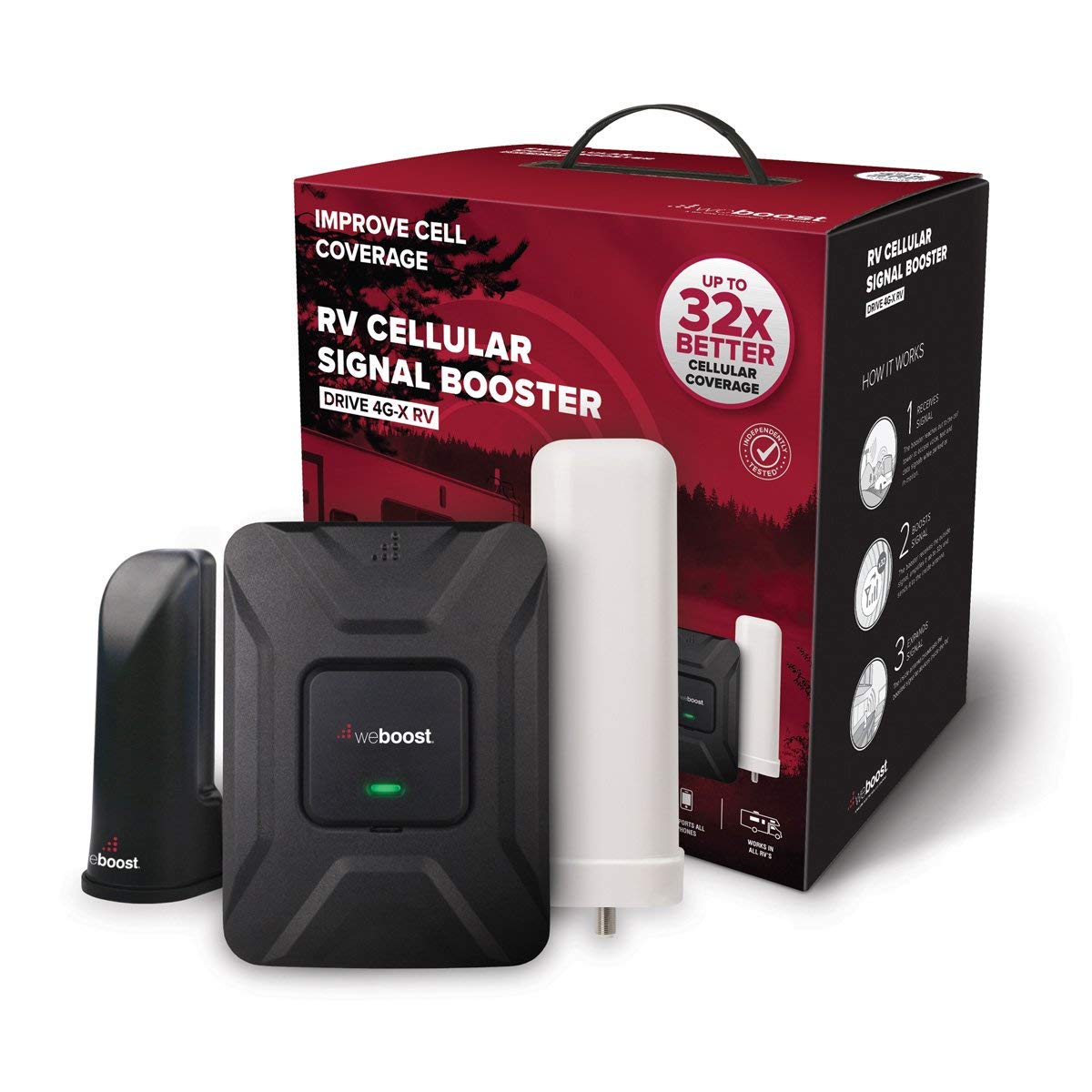
You spend a lot of time outside the RV while camping, so the signal needs to be strong not just inside your RV, but also nearby. Here are the things you’ll need to reliably access the Internet from your RV and campsite:
- A data source for connecting to the Internet.
- An antenna.
- Signal extender.
- Some way for devices to link to the signal.
- Power cable for the antenna.
- Router and Ethernet cable if you want to connect a device physically.
Choosing a Data Plan
On the road, you can get data delivered reliably to your RV only by paying for it. You can tap that data with the proper equipment, but you’ll probably have to increase the maximum data available. Tablets and computers, streaming services and game consoles gobble up data.
If you vacation only a month or three each year, you can buy only as much data as you need the rest of the year and pay for extra data in the months you travel. You will need extra especially if kids are streaming music and movies, watching TV, gaming and chatting. Extra data also is advisable if you work online from your RV or watch a lot of TV.
Beware data plans labeled “unlimited.” Only in our age of steadily decaying consumer protections could something be called unlimited and still incur extra charges for data—but some data plans do just that. Read the fine print.
Antennas, Accessing the Web
An antenna to pull in a signal is often roof-mounted for optimum reception. Omni-directional antennas take different forms, from painted metal to plastic-coated, and sometimes encased in a larger plastic enclosure. Antennas add height, but no more than a hooded fan. Still, you’ll have to avoid damaging an antenna on overpasses or branches. Position an antenna away from other roof-mounted accessories to avoid interference.
Exterior antennas are designed to resist dust and water intrusion from spray, but even enclosures designated IP65 will not resist water jets, so take care when washing. Seal any mounting holes or openings for cables with Dicor or a sealant approved by your RV manufacturer.
Some RV antennas are also a signal extender. They strengthen incoming and outgoing signals. With an extender, you can be farther from a cell tower and still get a usable connection. If you have no data plan, an extender amplifies WiFi signals from RV parks and businesses.
Some tablets and any smartphone can link wirelessly with a password, and many smartphones can also serve as a hotspot, allowing Bluetooth-enabled devices to link through the phone to access the Internet. A separate portable hotspot (often called a jetpack) costs $200 or less. The optimum solution for multiple devices, or if you want an Ethernet connection, is to install a router to distribute the signal from the antenna. Combination signal extender/routers also are available.
Channel Bonding
Channel bonding isn’t necessary, but it can help prevent dropped calls and buffering while streaming. It helps maintain connectivity when you are beyond official coverage zones—ideal for boondocking. Uploading and Skyping also will be stronger.
Bonding combines any channels on which you receive data to produce one stronger signal that’s sent over your own virtual private network (VPN). So, if you have a cell signal, an Ethernet signal and a WiFi signal, or, say, an AT&T and a Verizon signal, plus a WiFi signal from the RV park, bonding will enjoin them on the network side and result in faster throughput. An example is Speedify. It’s available in one-year subscriptions if you’re full time or close to it, or monthly if you only vacation in your RV.
Photo Credits: weboost.com
